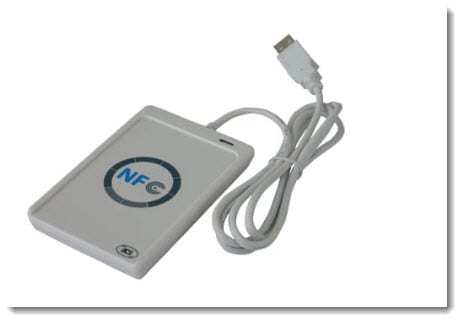

You can then take the new tag you want to use and place it where the old one was. Once you have done this, click on the “Read” button. You can then hold this up to the side of your phone with the NFC chip. You will first need an EM4100 card or fob to transfer RFID to your Android phone. NFC capabilities can also be used to make payments. For example, NFC tags can be programmed to open a website, turn on Bluetooth, or share your Wi-Fi password with a friend. While RFID tags are mostly used for tracking purposes, NFC tags have a variety of uses. NFC tags can also launch apps on a paired device (Android phone). Once paired, the devices can share files, contact information, and directions. This can be done by bringing the devices close together and touching them or by entering a passcode. Finally, while an RFID tag must be close to a reader, an NFC tag can be read from up to four inches away.įor information transfer between two NFC-compatible devices, they must first be paired. Additionally, while RFID tags can only store a small amount of data, NFC tags can store up to 32 kilobytes of data. However, there are some key differences between the two technologies. RFID technology and NFC devices are similar in that they are both based on radiofrequency technology. The key will be deleted from your Wallet. If you want to remove a key from your Wallet, go to Wallet > Keys and tap the key you want to remove. The next you use your phone as an access card, it will automatically use the default key. To do this, go to Wallet > Keys and tap the key you want to use by default.

In addition, I would like to see CP be used when inquiring the tapped/scanned card.You can choose which one to use by default if you have multiple keys. Octopus has an Android app that can perform online payments allowing users to scan a QR code and tap their Octopus card on their NFC Android phone. With a dedicated card reader (such as a smart card contact chip reader, Octopus PC Reader ( Octopus PC Reader Service),Įtc.) can also perform CP transactions but with greater flexibility for inputing card data. alongside with CNP (Card Not Present) for cards without NFC capabilities (including no barcode, QR code, etc.) and direct payments from mobile wallet apps and payment sites such as PayPal. EMV credit/debit contactlessĬards, Octopus cards, etc.), barcode card, QR code card, etc. Also, I would like to see developers make CP (Card Present) as an option for online payments when making payments with an NFC card (I.e. Suica cards, etc.) along with initiating various tasks such as pairing Bluetooth devices.

Oyster cards, T-money cards, etc.) and FeliCa (I.e. I wonder if in the future will future Surface and other Microsoft devices have NFC? I rather have NFC integrated in a Surface device to read and write tags such as MIFARE DESFire EV1 (I.e.


 0 kommentar(er)
0 kommentar(er)
